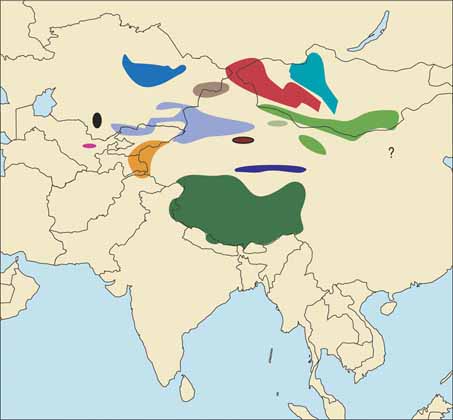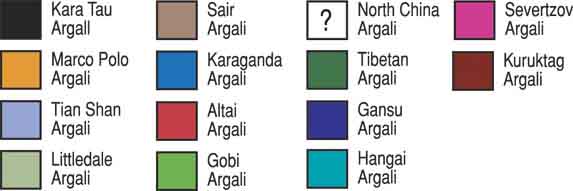 |
 |
Ovis ammon adametzi
Named after the Kuruktag mountains where it lives.
DESCRIPTION No body weights or measurements are available, but photographs show this to be a smaller argali. The coat is reddish brown on the back, with grayish-brown flanks. Rump patch, insides of legs, underparts, throat and muzzle are white. Forehead and sides of face are grayish tan. There is no throat ruff. Horns of the two rams for which we have measurements are relatively small, with 42-to 39-inch lengths and 13-inch bases.
DISTRIBUTION Found only in the Kuruktag range in Xinjiang, China. These are small, low mountains that run west to east for perhaps 200 miles (120 km), and are located south of the Tian Shan range and north of the Konqi River, from southeast of Korla to northwest of Lop Nur. Altitudes range from about 5,000 to 9,000 feet (1,500-2,700 m).
TAXONOMIC NOTES Both the U.S.and Canadian wildlife services consider adametzi to be a form of Tibetan argali (O. a. hodgsoni), which is listed as endangered by the USF&WS and on Appendix I of CITES. We disagree, as adametzi looks nothing like a hodgsoni and, furthermore, is found in the wrong geographical area. The IUCN lists it as a race of Tian Shan argali (O. a. karelini), which is more reasonable.
REMARKS SCI member Ron Carey is the first sportsman to take a Kuruktag argali in modern times. From his accounts, this is a physically demanding hunt in difficult terrain, and good rams are hard to find.
|





